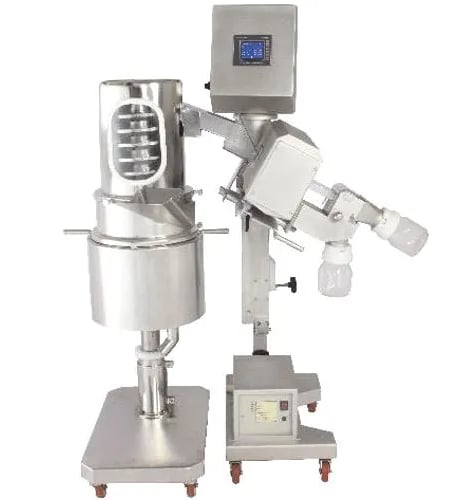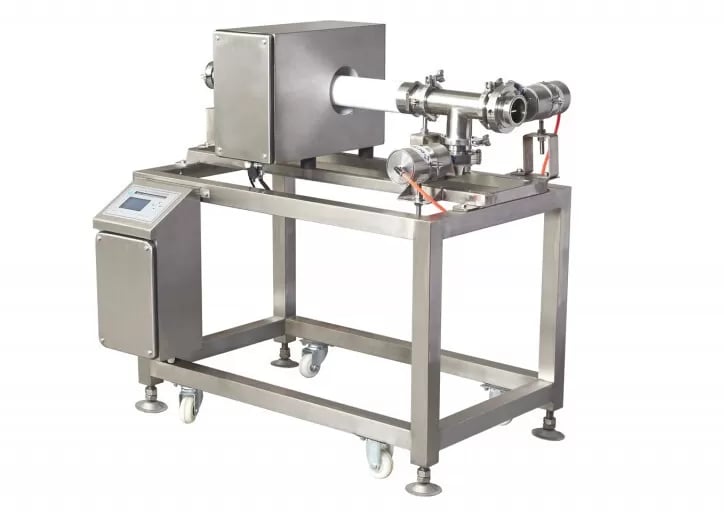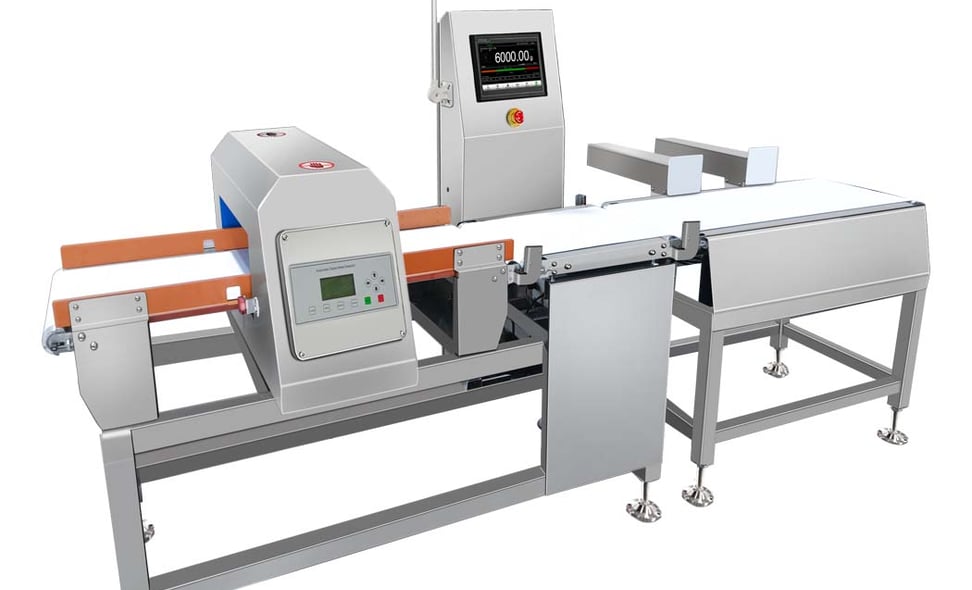Product
METAL DETECTOR
A pipeline metal detector is a type of metal detection system specifically designed for detecting metal contaminants in liquids, semi-liquids, or powders as they move through a pipeline. These detectors are commonly used in industries like food processing, pharmaceuticals, beverages, and chemicals, where products flow through pipes and need to be monitored for safety and quality. Pipeline metal detectors are essential tools in industries where products flow through pipes. They provide a reliable method for detecting metal contamination in liquids, semi-liquids, or powders, ensuring the safety and quality of the products. By identifying metal contaminants early in the production process, these systems help maintain consumer safety, reduce costs, and comply with regulatory standards.
Metal Detector Options
Sorting and Ejection: Upon detection of metal contamination, some systems are equipped with automatic reject mechanisms, such as air jets or mechanical arms, to remove the contaminated product from the production line. This ensures only safe, uncontaminated products continue to the next stage.
Metal detection in the food processing industry is a crucial aspect of ensuring product safety and quality. Metal detectors are specifically used in this context to identify any foreign metal objects that may have accidentally contaminated food products during production, packaging, or distribution. These metal fragments, which can come from machinery, tools, or even packaging, can pose serious health risks to consumers, as they may cause injuries or be harmful if ingested.
A pharma metal detector is a specialized metal detection system used in the pharmaceutical industry to ensure that products, such as medicines, tablets, capsules, and other drug-related items, are free from metal contamination. Just like in the food industry, metal contamination in pharmaceuticals can occur due to machinery wear and tear, tools, or even packaging materials. This contamination can be harmful to consumers, especially if it leads to injury or affects the quality of the product. Pharma metal detectors play an essential role in ensuring the safety, quality, and compliance of pharmaceutical products. They help prevent dangerous metal contamination in drug products, which could harm consumers or undermine the integrity of the brand. By using these detectors, pharmaceutical manufacturers maintain high standards and keep their products safe for the people who rely on them.


How Metal Detectors Work in Food Processing:
Electromagnetic Field: A metal detector uses an electromagnetic field to scan food products as they move along a production line (e.g., on a conveyor belt). This field is generated by coils that create a magnetic field around the product.
Metal detectors used in food production are designed to detect the presence of metallic contaminants, such as stainless steel, aluminum, and ferrous metals (like iron and steel), in a wide variety of food products. Here’s how these systems typically operate:
Signal Disruption: When a piece of metal passes through this electromagnetic field, the metal disrupts the signal. The detector senses this disruption and triggers an alarm, indicating the presence of metal contamination.
Sensitivity and Calibration: The sensitivity of metal detectors in food production can be adjusted based on the type of product being processed and the size of the metal contamination. For example, the system will be calibrated to detect very small metal fragments in processed food products, even if the fragments are minuscule or deeply embedded.
Pharma Metal Detector
Pipeline Metal Detector


Coil Metal Detector
A coil metal detector is a type of metal detection system that uses a coil of wire to detect metal objects. It's one of the most common types of metal detectors and is widely used in various applications, including security, treasure hunting, industrial settings, and archaeological digs.Coil metal detectors are essential tools used in a wide range of applications, from hobbyist treasure hunting to industrial quality control. Their ability to detect metals using an electromagnetic field makes them reliable for locating everything from coins and jewelry to metal contaminants in food or pharmaceuticals. Whether for personal use or industrial applications, coil metal detectors provide a simple yet effective method for metal detection.
Conveyor Metal Detector
A conveyor metal detector is a specialized system used to detect metal contaminants in products as they move along a conveyor belt during the manufacturing or processing stages. These detectors are widely used in industries such as food processing, pharmaceuticals, packaging, and manufacturing, where metal contamination in products can pose a serious safety risk to consumers and damage to equipment.Conveyor metal detectors are essential for ensuring the safety and quality of products as they move along production lines. They are widely used in industries like food processing, pharmaceuticals, and manufacturing to detect and remove metal contaminants that could pose a risk to consumers or damage equipment. By automatically identifying and rejecting contaminated products, conveyor metal detectors help manufacturers maintain high standards, comply with regulations, and reduce the risk of costly product recalls.


Product Inspection
Specialized solutions for metal detection and weight checking industries.








